Dahlias "Gallery": description, varieties and cultivation
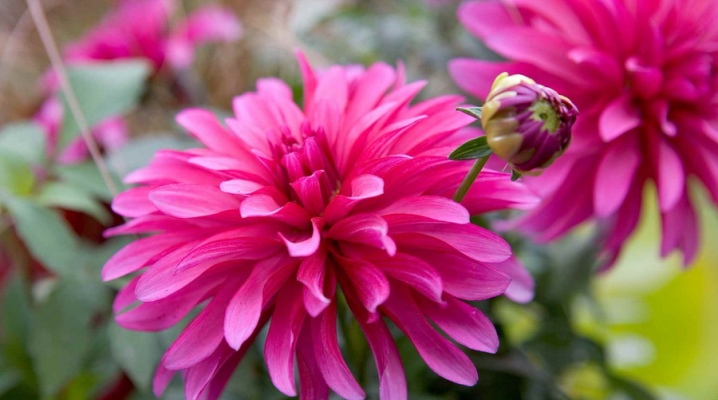
Dahlias are actively used to decorate flower beds in public places, as well as in private front gardens. Today this flowering culture is also represented by low-growing varieties, among which the Galleri dahlia is especially popular. The variety is ideal for ornamental gardening and includes a large number of varieties.
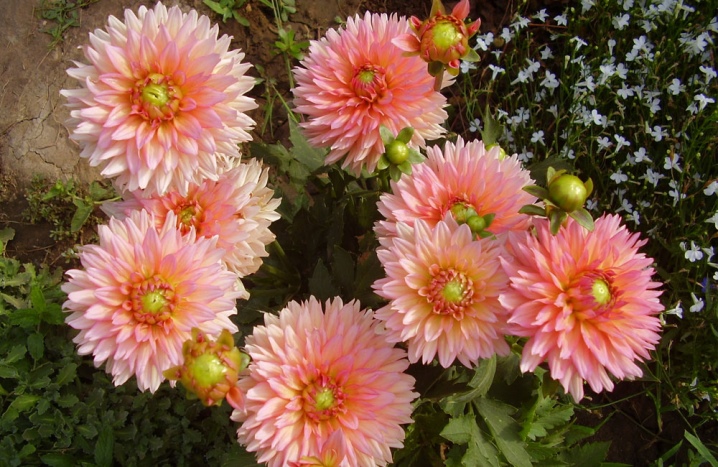
Peculiarities
Dahlias are recognized as one of the most spectacular flowers that are used for landscaping, decorating front gardens, as well as for composing bouquet arrangements. Most of the varieties of this culture are represented by plants with tall stems. However, dahlias "Galleri" are a special species, a distinctive feature of which is the short stature of the bushes. The culture was bred in the Netherlands, today "Galery" is represented by several dozen varieties.
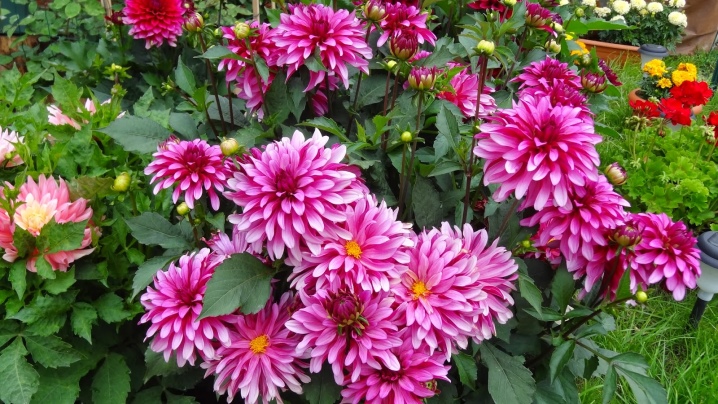
Almost all of them do not exceed 30-45 centimeters in length, the inflorescences are lush, in diameter they can be 10-15 centimeters. This variety is notable for its unpretentiousness in terms of care and cultivation, as well as a wide selection of flower colors. A large number of varieties of this undersized flowering bush allows you to create incredible beauty compositions on an area of dahlias, even with minimal gardening experience.
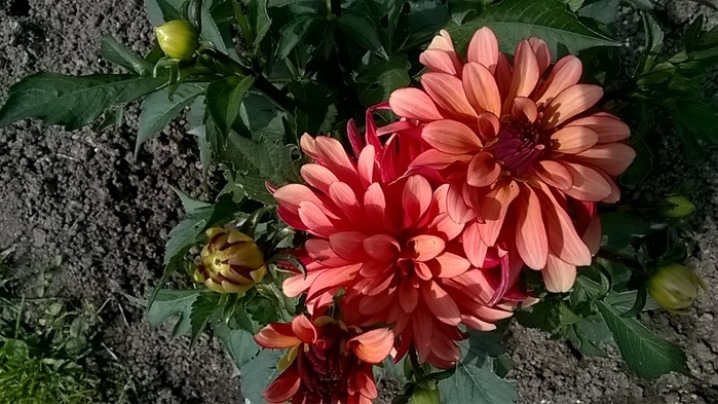
Dahlia inflorescences "Gellery" are terry, collected in a brush. The stems are distinguished by their power, in light of which the culture is unlikely to be broken off by strong gusts of wind or streams of water during irrigation. The plant enters the bud development phase in the second half of May, delighting the grower with its beauty and continuous flowering until the arrival of frost.
Among the distinctive features of undersized flowers, it is also necessary to note their resistance to various diseases and pest attacks. Today, seed material of this type can not always be found on sale, however, more and more flower growers prefer this particular garden culture. Among the features of the "Galery" dahlia, it is necessary to highlight the following positive characteristics:
- easy maintenance and minimum requirements for the landing site;
- immunity to many ailments;
- the culture belongs to the border flowers, therefore it can be grown both in the open field and in vases, pots in the fresh air;
- in the light of a powerful and small stem, the flower does not need tying and support;
- after cutting, the flower remains fresh for a very long time, even in a vase of water.
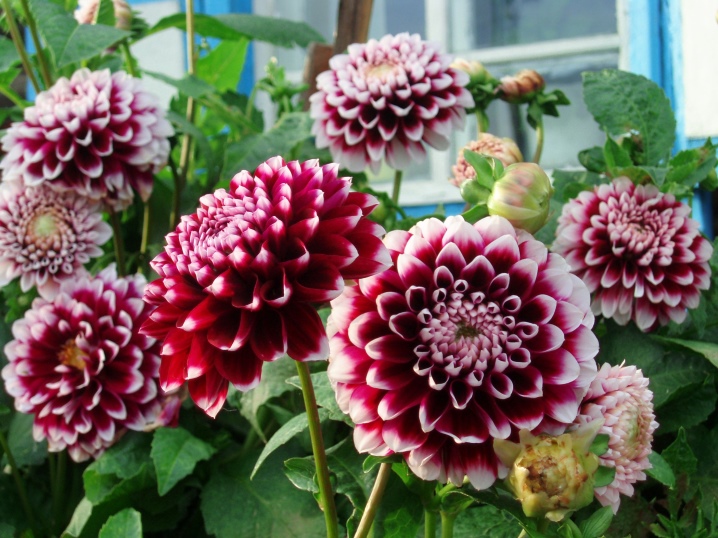
Among the shortcomings of culture, it is necessary to note the following features:
- the plant is moisture-loving, so the gardener will need to regularly pay attention to his flower beds;
- dahlias die at negative air temperatures, therefore, tubers must be removed from the soil for the winter.
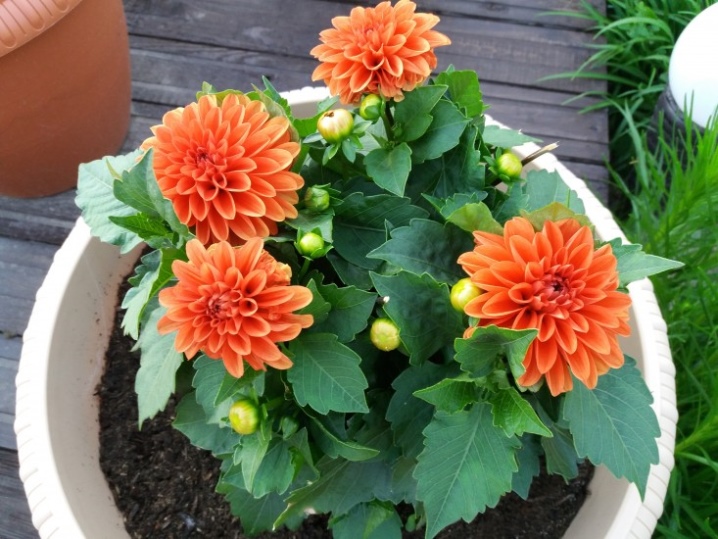
Varieties
A low-growing decorative variety today is represented by several dozen multi-colored plants. Among the variety of varieties available, the following crops are especially popular with gardeners.
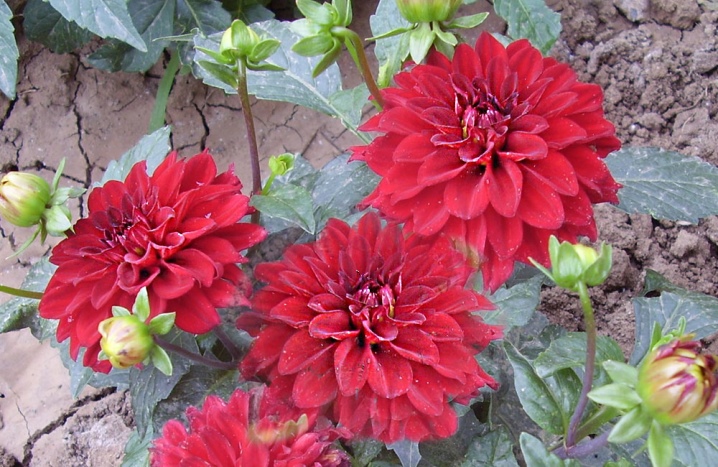
Gallery Leonardo
A compact flowering bush characterized by the appearance of petals on the inflorescences. As a rule, they have edges slightly curled inward. This trait allows the plant to acquire additional curliness and splendor. The inflorescences of the culture have a salmon color.
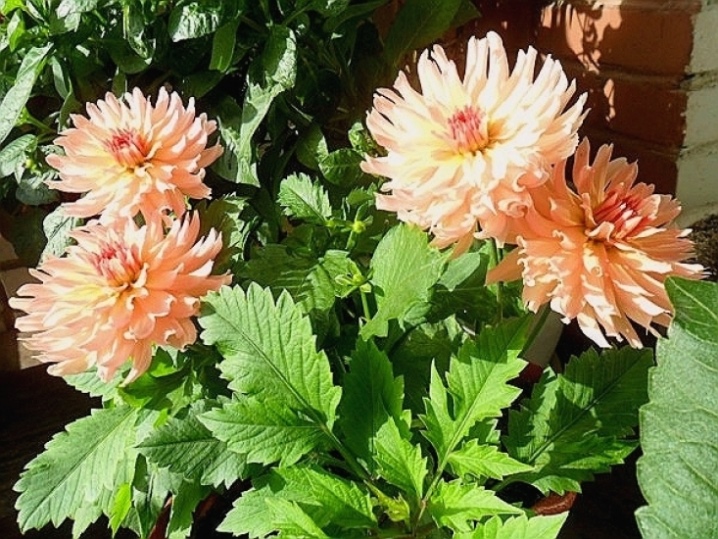
Gallery Vermeer
In this variety, the petals are arranged in such a way that the inflorescence becomes almost perfectly round. The color of the flowers will be orange.The diameter of the inflorescences does not stand out for its size, ideally it is about 7-8 centimeters, but in general the bush looks very developed and lush.
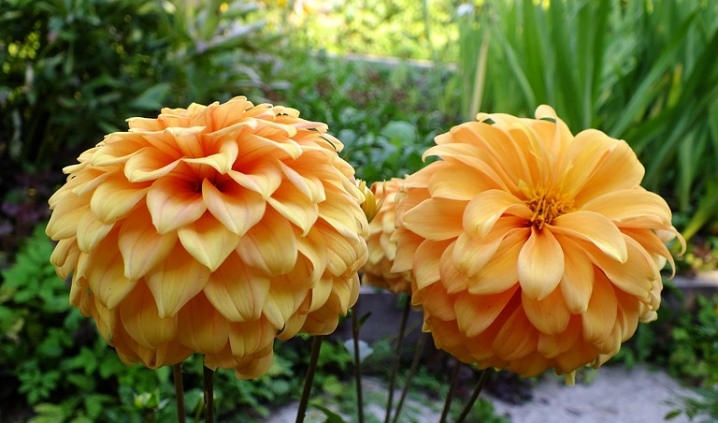
Gallery Matisse
The culture blooms with orange inflorescences. The petals of the plant stand out for their velvety texture. The stem does not exceed standard sizes, therefore it reaches 30-35 centimeters in length, with an open inflorescence diameter of about 10-15 centimeters.

Gallery Vincent
Dahlias bloom with orange blossoms, which are notable for their muted tones in color. They are larger in size than the above varieties, therefore they grow in diameter up to 15 centimeters. At the same time, the border culture itself can stretch up to 60 centimeters.
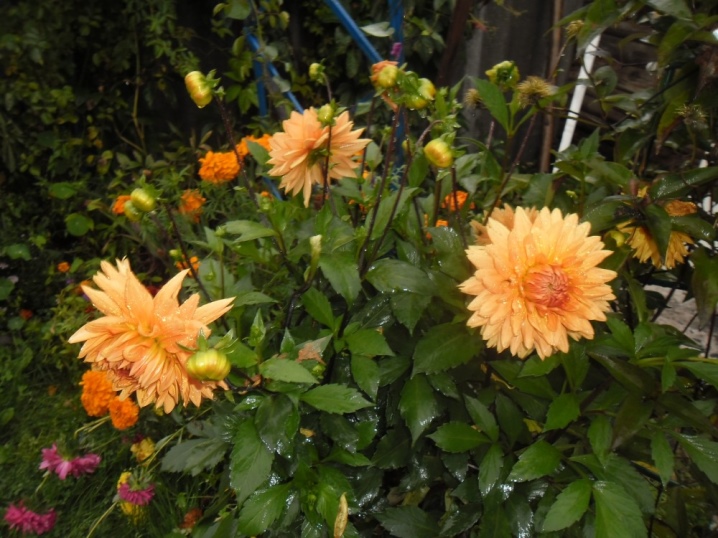
Gallery Art Deco
The culture of this species has an interesting brick color of its inflorescences. Due to the color of its petals, such a culture will be able to take one of the main places in the flower bed.
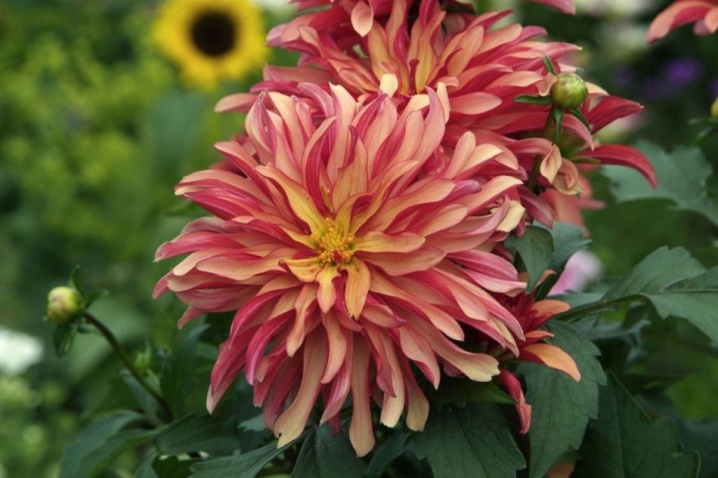
Gallery Valentine
Plants under this name bloom with bright red flowers, in the light of which they stand out in demand among florists and gardeners. The inflorescences are quite large, in composition with other flowers they will look very dignified.
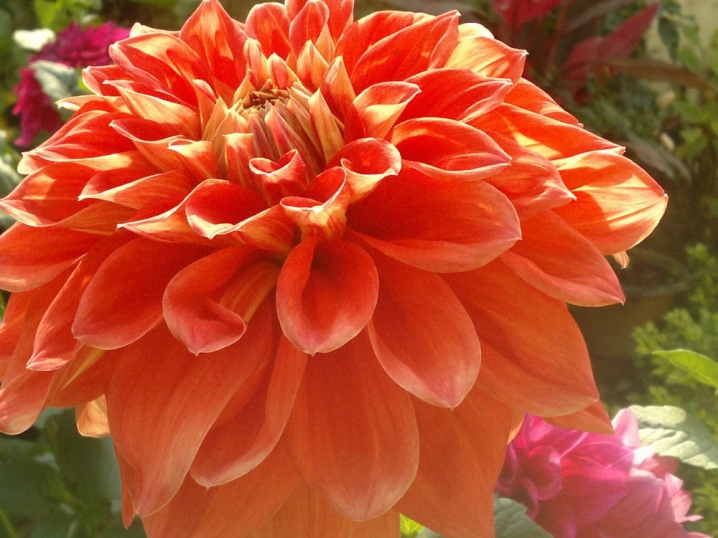
Gallery Cobra
The culture received a similar name in the light of the color of its flowers. So, the upper edge of the petals will be red, while at the bottom the flower will become peach. The plant is very lush and the flowers are large.

Gallery Singer
The culture blooms with scarlet inflorescences, the diameter of which usually exceeds 13 centimeters. The stems reach 40 centimeters in length.

Riviera Variety
Among the varieties available, this crop is considered the most attractive. This is due to the splendor of the flowering of the bushes. The flowers of the plant have a bright red color. Dahlias will be small and compact in size, the length of the stems will be no more than 30 centimeters.
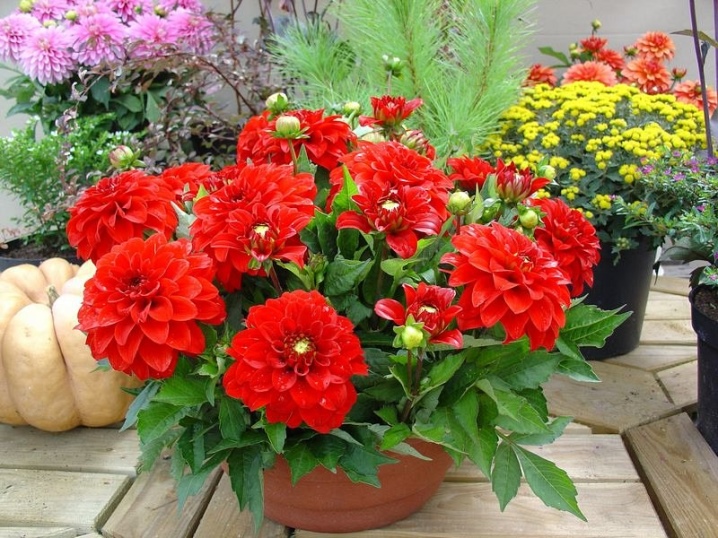
Gallery Art Nouveau
Dahlia flowers of this variety can be purple or dark pink. The petals at the base have a characteristic slope, always directed in one direction. Thanks to this arrangement, the flowers on the bush imitate a graphic pattern.
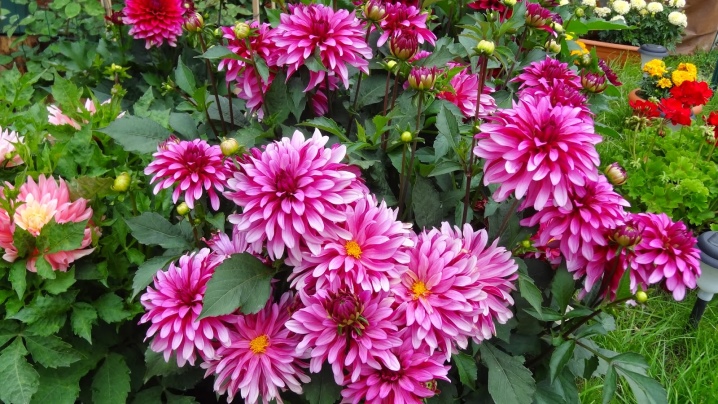
Gallery Art Fair
A variety for fans of delicate garden flowers. The inflorescences will have a white color with a smooth transition in the center to light green. In this case, flower petals usually develop with an interesting downward bend.
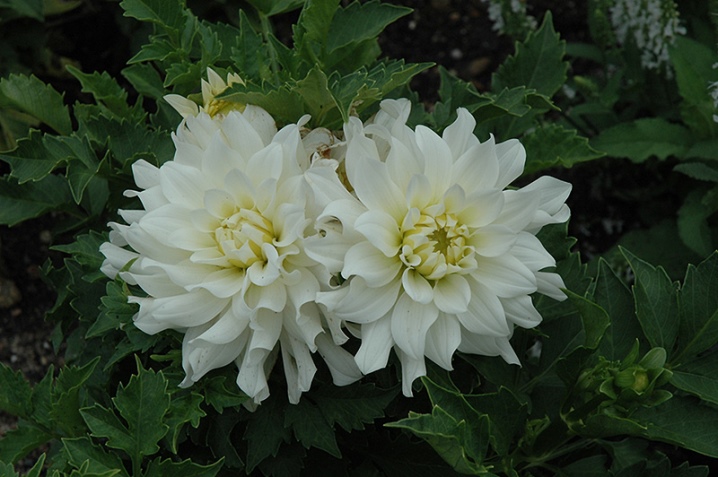
Gallery Singer
Inflorescences without bends in the structure of the petal, the color is red without blotches and transitions. The diameter of the dahlia will be about 10-13 centimeters.
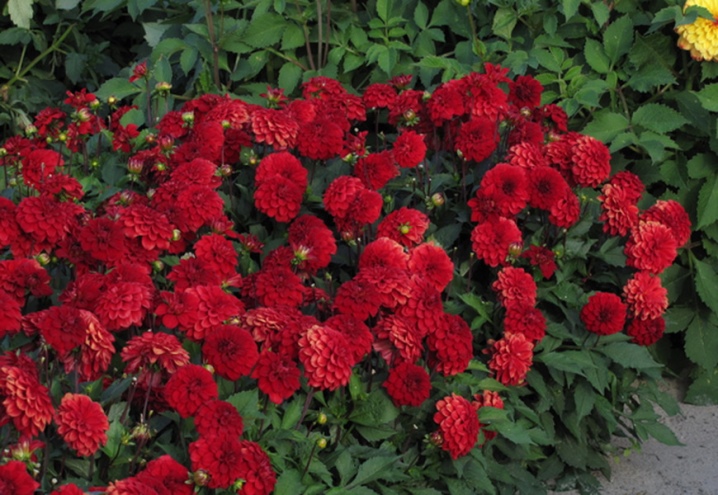
Gallery Coin
The variety is notable for the two-tone color of the flowers. The predominant color of the dahlia is a milky shade, along the edge turning into lavender. The base itself is yellow.
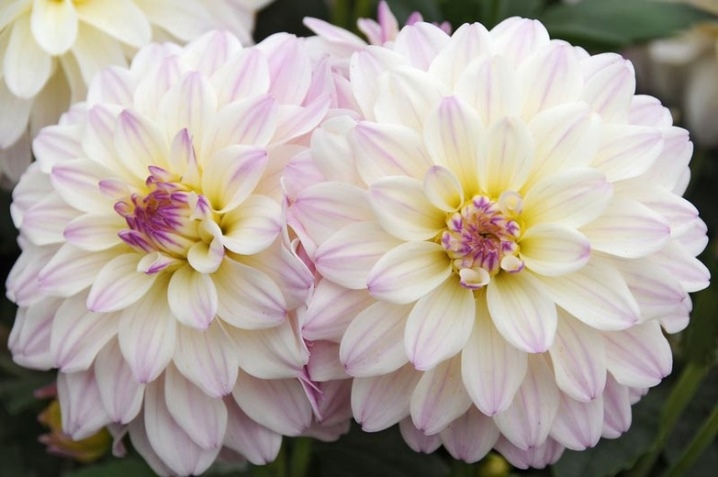
Gallery Pablo
A variety of garden culture is distinguished by yellow inflorescences with petals curved upward. Such a structure allows dahlias to acquire an external resemblance to a basket. Each petal of the inflorescence has a salmon color along the edge.
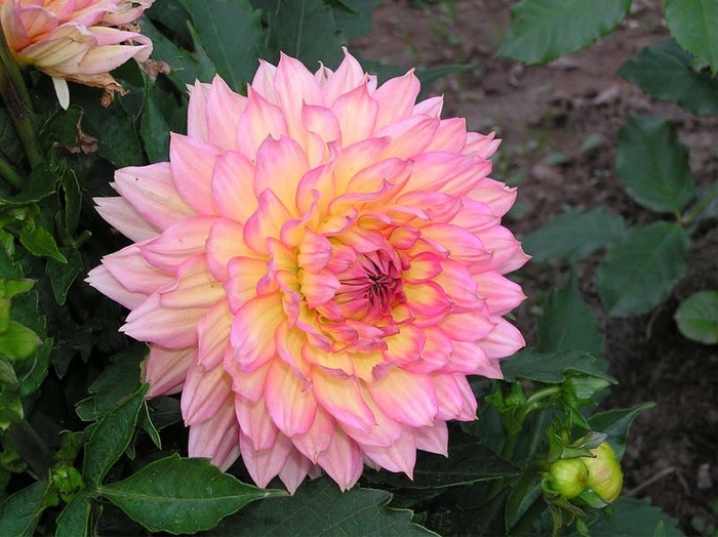
Gallery Rembrandt
The flowers look quite impressive among the lush greenery of the bush, since they have a beautiful pink color of the petals. In diameter, the size of the inflorescences is 12-15 centimeters.
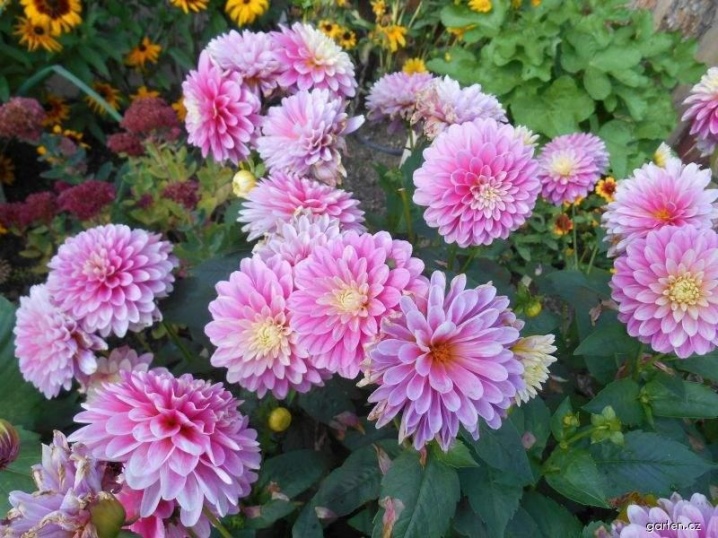
Galleri Salvador
According to the description of this type of border flower, dahlias will have pink petals with chaotic longitudinal blotches of brighter tones. The culture itself is compact in size; during flowering, it forms a lush rosette of inflorescences.
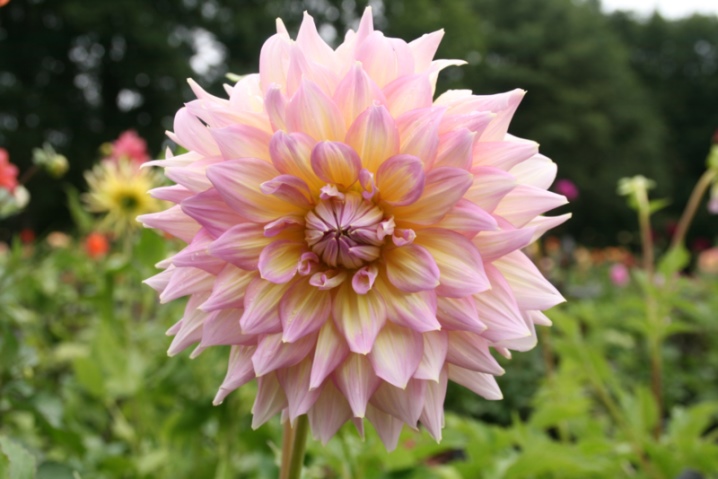
In addition to the aforementioned popular varieties of dahlia "Galery", gardeners successfully grow:
- Gallery La Tour;
- Gallery Bellini;
- Gallery Pinto;
- Gallery Riviera;
- "Gallery Renoir".
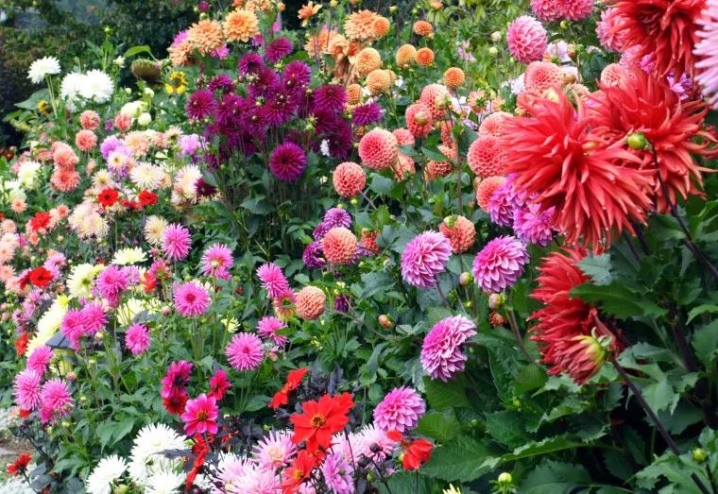
How to plant?
The culture belongs to tuberous perennials. For successful flowering, flowers are recommended to be planted in the following types of soil:
- black soil;
- sandy loam and loamy soil.
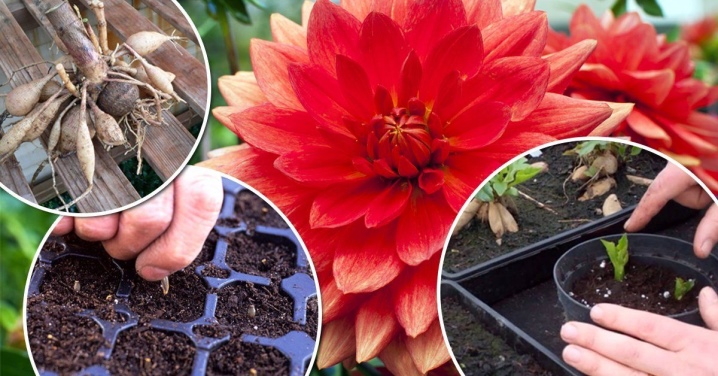
You can plant a plant in the garden in small containers (about 5 liters in volume) or directly into the ground. To enjoy the beautiful bloom, dahlias should be placed in front gardens and flower beds, which will be in partial shade for most of the day.
The optimal time for flowers to be exposed to direct sunlight is 5-6 hours a day. For cultivation in one of the types of soil, it is recommended to monitor the natural aeration inside, so the soil should be loose. Before planting, the flower bed is usually fertilized with compost.
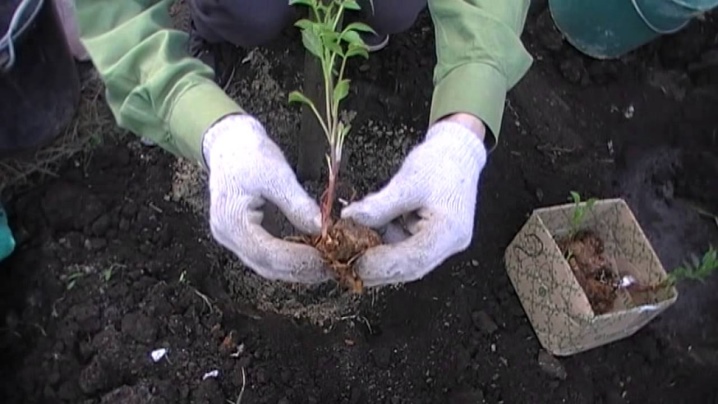
The optimal time for planting flowers in open ground is mid-May. Planting involves placing the plant with its eyes upward, with their deepening into the ground by no more than 10 centimeters. It is recommended to root flowers with a minimum distance of 30-40 centimeters from each other, since dahlias grow well in different directions during development. After rooting, each specimen is watered, the soil is mulched near the flowers with the help of crushed bark

The only undesirable neighbor for the plant will be an aster, otherwise the flower develops well with all types of ornamental horticultural crops.
Care rules
In general, agrotechnics related to Gallery dahlias involves the observance of simple measures. So, in order to protect the perennial from diseases and attacks of insect pests, you should regularly mulch the soil around it. This method will also help prevent the soil from drying out in summer. To maintain the decorative appeal of the crop, the gardener is advised to regularly prune the flower.
The optimal number of shoots on one perennial will be 3-4 pieces. If you leave a larger amount, then in the process of growing dahlias, the inflorescences will tend to decrease in diameter, in addition, the flowers will not be so lush. It is recommended for the flower grower to remove already wilted buds from the bushes, since they retard the development of new ones.

Among the pests that pose a danger to dahlia, it is necessary to highlight aphids and slugs. To avoid the death of a flowering perennial from these insects, as a preventive measure, it is necessary to process the culture with a decoction based on celandine or wormwood. If insects are found on a flower, he needs to arrange a soapy shower.
Top dressing
For health and good flowering, dahlias should be fertilized regularly with various compounds. Usually, the frequency of the introduction of dressings will be 2 times a month. Usually, in the process of fertilization, mineral and organic fertilizing alternates. As soon as the plant enters the flowering phase, and the buds begin to swell on the bushes, the flower will need feeding with superphosphates and potassium preparations. Dahlias can also be fertilized with rotted manure.
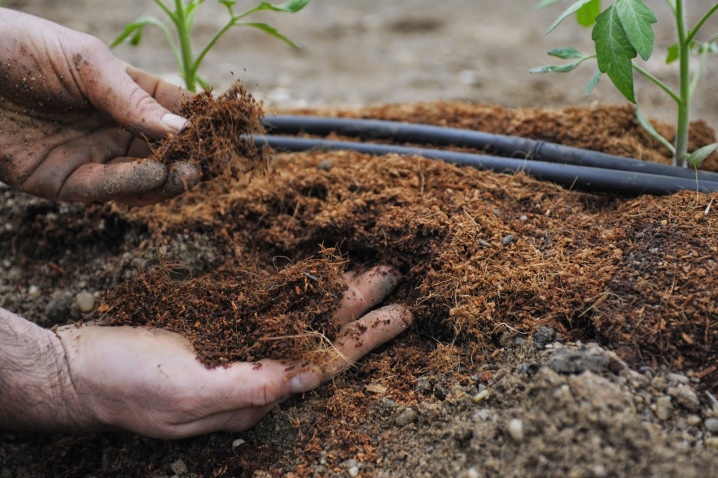
Watering
Flowers should be watered abundantly, but moisture stagnation in the soil should be avoided. It will be sufficient to inject moisture twice a week. To save moisture and sufficiently moisten the flower, you can first remove the soil near the stem, water the dahlias, and then return the earth to its place again, spud the perennial.
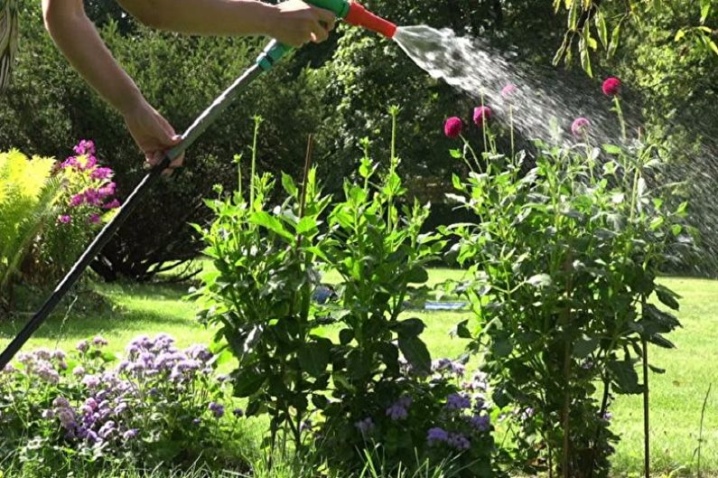
Cleaning and storage
As a rule, tubers are removed from the soil at the onset of the first frost. Usually this is the beginning or mid-October, it all depends on the growing region. A preparatory measure before harvesting will be pruning the stems and green mass. It is more correct to extract dahlias from the ground in the morning, choosing dry and calm weather for this, since it will be many times more difficult to remove dahlias from the tubers.
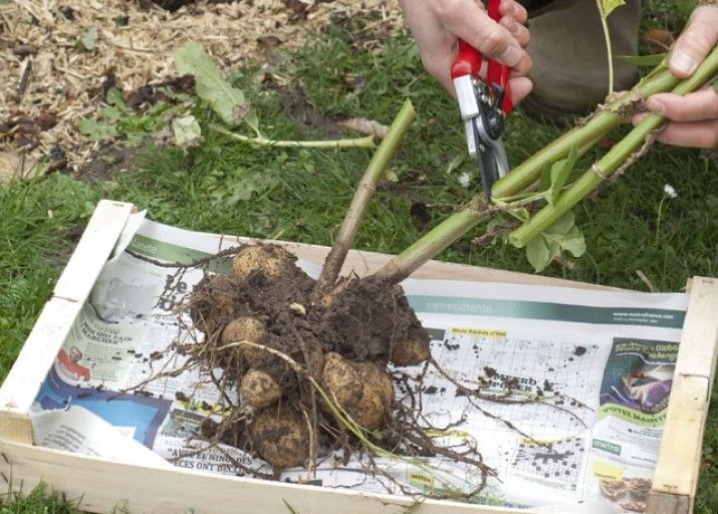
The process of extracting the culture involves preliminary digging in the bush within a radius of 30 centimeters. After that, the gardener needs to cut the supply roots, remove the remaining soil from the plant, rinse the tubers with water and dry. The best option for storing culture will be a dry room, where during the winter months the temperature will remain constant in the range from +3 °From to -5 °WITH. Tubers should be placed in a small box, sprinkled with peat or sand.In addition, dahlias can overwinter in sawdust.
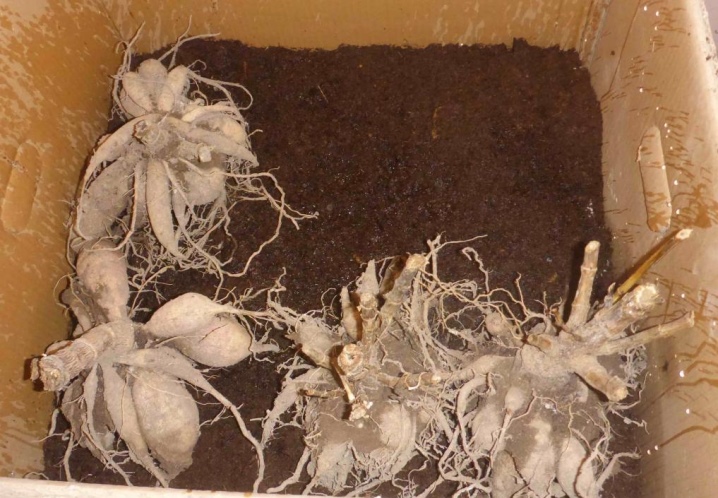
It is important that air circulates in the room, such a requirement will avoid rotting plants. The gardener is also advised to avoid drying out the tubers, as needed, they can be slightly moistened.
For information on how to properly care for Gallery dahlias, see the next video.







































































































The comment was sent successfully.